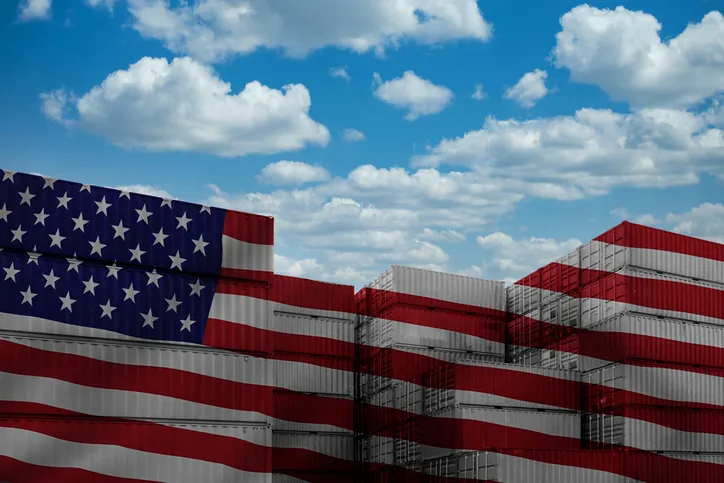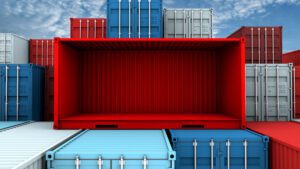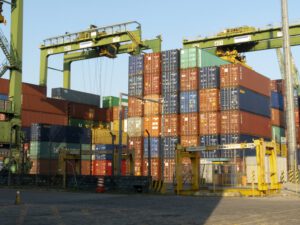The US market is highly sophisticated, competitive and demanding in terms of commercial practices and also for the quality of products. Before the goods can be exported in a vessel to the US, the importer or the Cargo Agent shall electronically send the ISF (Importer Security Filing) and some more cargo information to the US Customs.
If you are an exporter but never heard of ISF, that is because your Cargo Agent handled all the points for this registration to comply with the US authorities. And that is because all the cargo bound for the US or just passing by the country in a maritime shipping must have ISF.
After all, what is ISF?
O Importer Security Filing is part of the Customs and Border Protection (CBP – U.S) program that regularly demands that importers and primary shippers supply commercial and transportation data before shipping the cargo.
What data are requested?
There are two types of ISF. The most popular is ISF 10+2 that is the registration of cargo whose final destination is the USA. ISF 5 is exclusive to goods that are only passing by the US territory. The names of documents suggest the type and amount of information required in ISF.

In ISF 10+2, the importer must declare 10 pieces of information and the primary shipper (responsible for the operation of the vessel) must declare 2 pieces. They are the following:
Information filed by the importer:
- Importer of Record Number
- Consignee Number
- Seller
- Buyer
- Ship To Party
- Manufacturer
- Country of Origin
- Commodity HTS
- Container Stuffing Location
- Consolidator
The information must be registered in CBP, at least 24 hours before the cargo is shipped. The exception is the Container Stuffing Location and the Consolidator. They must be registered after the boarding, up to 24 hours before their arrival in the USA.
Information filed by the primary shipper:
- Vessel Stow Plan
- Container Status Message – CSM
The stowage plan shall be transmitted to CBP in not more than 48 hours after the departure of the vessel from the boarding port. As for the status messages, they shall be registered within 24 hours of the vessel departure from the port. There is a number of messages that must be registered and are defined in the Code of Federal Regulations, Title 19 paragraph 4.7d – Container status messages.
In ISF 5, the shipper registers the data directly either being primary or no Non-Vessel Operating Common Carrier. The data are:
- Booking party
2. Foreign port of unloading
3. Place of delivery
4. Ship to party
5. Commodity HTS
How does the registration work?
The United States have a complex customs system that allows integration and a rapid data processing. There are several specialized companies in developing programs that communicate with CBP. These programs/systems include the data that shall be sent to the Customs.
<<< 5 steps to start exporting to the USA
The exporter is usually the responsible to send a form to the USA in either PDF or any other format of files with data to ISF. It is really important to have BL number. In case the exporter has Master and House, both numbers shall be informed.
Such numbers must specify the SCAC Code of the shippers. ISF must be filed according to the smaller BL existing in the boarding. Example: If the shipping has a Master BL, Sub-Master BL and House BL, ISF shall be registered considering the House BL that is the smallest number.
After registering and sending the information electronically, the CBP system will read these data. In case the BL has already been manifested, the system will associate the ISF with the BL and produce a 3Z code – ISF on file.
What if there is more than one BL for the same batch / process?
ISF must be filed by BL. This way, if the boarding has 5 BLs, for instance, 5 ISF files shall be registered. It is important to observe that it does not depend on the number of containers. A single container may have several BLs and, consequently the same number of ISF files.
My cargo is not being shipped to the US mainland but is bound for a US territory. Should ISF be filed?
ISF 10+2 must be filed for all cargo whose destination is the Customs territory in the US. And that includes all the US Mainland, Hawaii, Alaska and Puerto Rico. Other territories such as the US Virgin Islands, American Samoa and Guam, even though they belong to the US, they are not part of the US Custom territory. Therefore, it is not necessary to register in ISF 10+2.
My shipping is DDP. Who is responsible for the document?
In shipping that include Incoterm DDP, CBP understands as an importer the company legally responsible for the cargo clearance and the payment of taxes – the exporter him/herself. Therefore, ISF shall be filed by the exporter. And it is necessary to contract the services of a Broker in the USA and sign a Power of Attorney granting this professional the possibility to work on behalf of the company in the customs. It is also important to observe the Continuous Bond or Single Bond. Contact the broker if you do not have one of them.
If my cargo is not in a container, should I register in the ISF?
There are a few exceptions for cargo that are not in a container regarding ISF. Bulk cargo such as grains, gases and liquids among others, that are not used in the transportation, do not file ISF. For break bulk cargo that shall be used and/or that is possible to quantify in units, ISF shall be filed. E.g.: the shipping of soya in bulk does not need to have an ISF registration. The automobile transportation in a Ro-Ro ship needs an ISF. All these exceptions are fully explained in the Code of Federal Regulations, Title 19 paragraph 4.7
<<< AMS: what it stands for and how it is used in Foreign Trade?
I did not file ISF in due time. What now?
The importer that files ISF after the scheduled date might have to pay a fine of US$5,000.00. If the filing has incorrect information is subject to another fine of US$ 5,000.00. Therefore, the total fine might reach US$ 10,000.00. It is not a fixed cost, but the risk is high, and the penalties might come. However, the cargo to be unloaded without ISF filed to a certain BL is worse than the fines.
A few days before the cargo is unloaded in the USA, the CBP system checks the manifest – AMS – and, in case there is no 3Z – ISF on file, the system issues a 2O – Hold ISF not filed. That means that the cargo is blocked and can not be released. If the status is not corrected, storage costs and demurrage might be generated. Only after it is registered in ISF, CBP will issue a 4O – Hold Removed and the cargo shall be released if there is not another restraint.
ISF is a relevant topic. That is why Allog has a team of specialists and the support of qualified partners in the USA. We are always engaged to meet the deadlines and to work so that the filing is correct.
Are you interested in getting further information about ISG or any other part of the exporting process to the USA?
Reach Allog – we are always ready to help.
By Pedro Ramalho, Analyst of Operation at Allog.


